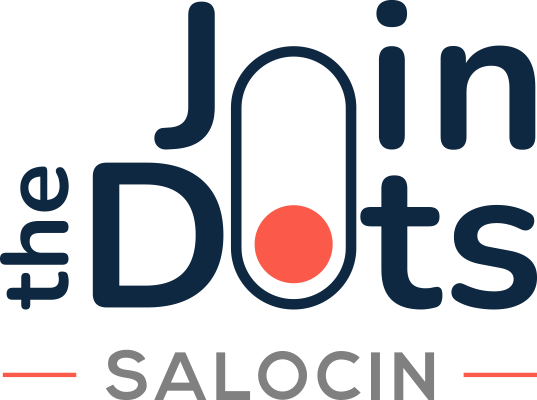In times of crisis, it’s essential that you adapt your donor acquisition strategy.
‘Charity begins at home’ is a phrase ordinarily given a wide berth, mainly because it has an uncomfortable air of selfishness about it.
However, as we find ourselves battling another year of disease, war, and economic challenges, the roots of its meaning may well be worth reconsidering against the harsh realities that people find themselves in.
When Sir Thomas Browne wrote the phrase in 1642, inspiration was drawn from a verse in the bible which advocates learning to practice piety at home.
It doesn’t necessarily mean though prioritising loved ones’ needs above others; rather, it teaches us to be there when someone needs to talk, to share food, and comfort them when they are feeling unwell.
So, how does this help when your CMO or Marketing Director wants you to equal your previous year’s fundraising income, or worse, surpass it?
With all charities going after a severely dwindling supply of donations from the same pockets – plus the added pain of soaring energy bills and the need to tighten belts – you can’t blame people for naturally thinking about their own home and loved ones first.
To respond to these new acquisition challenges effectively, you must view your media acquisition strategy and digital media promotion through a new lens.

Why you need to adapt your donor acquisition strategy
As Marketing Consultant Tracey Bowden puts it:
“There is no doubt the cost-of-living crisis and the turbulent times we are living in will continue to impact charitable giving, but I don’t think it changes the fundamentals that need to be in place for a charity to optimise its potential.
It still needs to be able to demonstrate its relevancy and urgency, and for some charities the cost-of-living crisis should make them even more relevant than before and create the platform to demonstrate their urgent need for support”.
In a recent blog, we focused on adapting media strategy to reflect changing supporter behaviour – something which is echoed further by Tracey:
“Cutting through the noise will only get tougher as more organisations (of all shapes and sizes) pile in on the human issues caused by the rising cost of living. To cut through effectively we need to be able to interrogate data quickly and uncover real human truths and motivations to be able to ‘meet’ existing and new supporters where they are at now, with relevant propositions.
For me, having a clear strategy and plan that all teams are bought into and understand the role they need to play to support is critical. But in these changing and challenging times any plan needs built in flexibility to address the unexpected when it arrives”.
How to adapt your digital media promotion and donor acquisition strategy
There is a natural tendency within the third sector to lean into ‘if it ain’t broke, don’t fix it.’ But when the going gets tough, it’s time to think like organisations in the private sector: how can we innovate to enable people to keep giving in the way they want to give, sate their natural desire to help others, but be mindful of their needs and altered situation?
If that all sounds like hard work, well, it is. Product innovation in the third sector is incredibly difficult; it takes time, it’s expensive, and the leap in how to be appealing needs to be huge.
There’s no more room for walks, bike rides, subscriptions, marathons, and coffee mornings in the saturated fundraising marketplace – which is where working with a trusted and experienced media agency familiar with both non-profit and fast-moving sectors provides immense value.

With our sister agency Edit, I’ve recently been looking at a completely different industry and how consumers have driven a radical change.
Pre-pandemic, a prospective car-buyer would visit a showroom seven times. However, with the advent of home-based research, virtual test drives, and the need for it to be quick, simple and something you can do from the sofa, we’re now more than happy to spend thousands and thousands of pounds on an item that used to feel like the biggest commitment in the world without setting a foot in a garage.
Disruptor brands such as ‘Cazoo’ and ‘Cinch’ have had a hand in recognising and fast-tracking this revolution. You’ll also be familiar with ‘Monzo’ and ‘Starling Bank’ who digitally challenged the financial institutions’ status quo.
In a similar vein, Edit and their client, Jaguar Land Rover re-invented direct mail for a digital generation scooping a DMA Gold Award and achieving a palatable ROI of 48:1.
What does this mean for charities’ digital media promotion?
If you were a charity disruptor brand, what would you do differently to shake up how people can donate to you and when, whilst continuing to achieve the budgets your CMO has set? Join the Dots did exactly that working with the RSPCA to navigate the Covid crisis through a test and learn approach.
But back to the original conundrum of how to persuade prospective or existing donors to help others in need whilst recognising their own anxieties.
Well, firstly, you must change your thinking, put aside the institutional way charities have traditionally done business (driven often by internal agendas and objectives) and truly put yourself in the shoes of those who want to give biut are conflicted by this latest financial kick to the stomach.
Ask them what they would like ‘giving’ to charity to look like in the future, how it can fit into their daily lives and how it makes them feel, so that they can continue to care for everyone and share their charity.
And, most importantly, don’t forget to tell them in plain words the good they are doing and the difference their donation makes.
It’s about using insights and asking the data how to build new propositions and products and shape your digital media promotion. Don’t just assume you know what people want or give them something that is essentially playing catch up.
Expert digital media promotion advice with Join the Dots
Who knows which crisis is just around the corner. What we can tell you for sure is there is one, and as Tracey says, that’s exactly why it’s so important to have a clear strategy and be prepared for what is inevitably to come by adapting and innovating your way out of it.
If you need support rethinking your digital media promotion and donor acquisition strategy, then get in touch with the team today.






